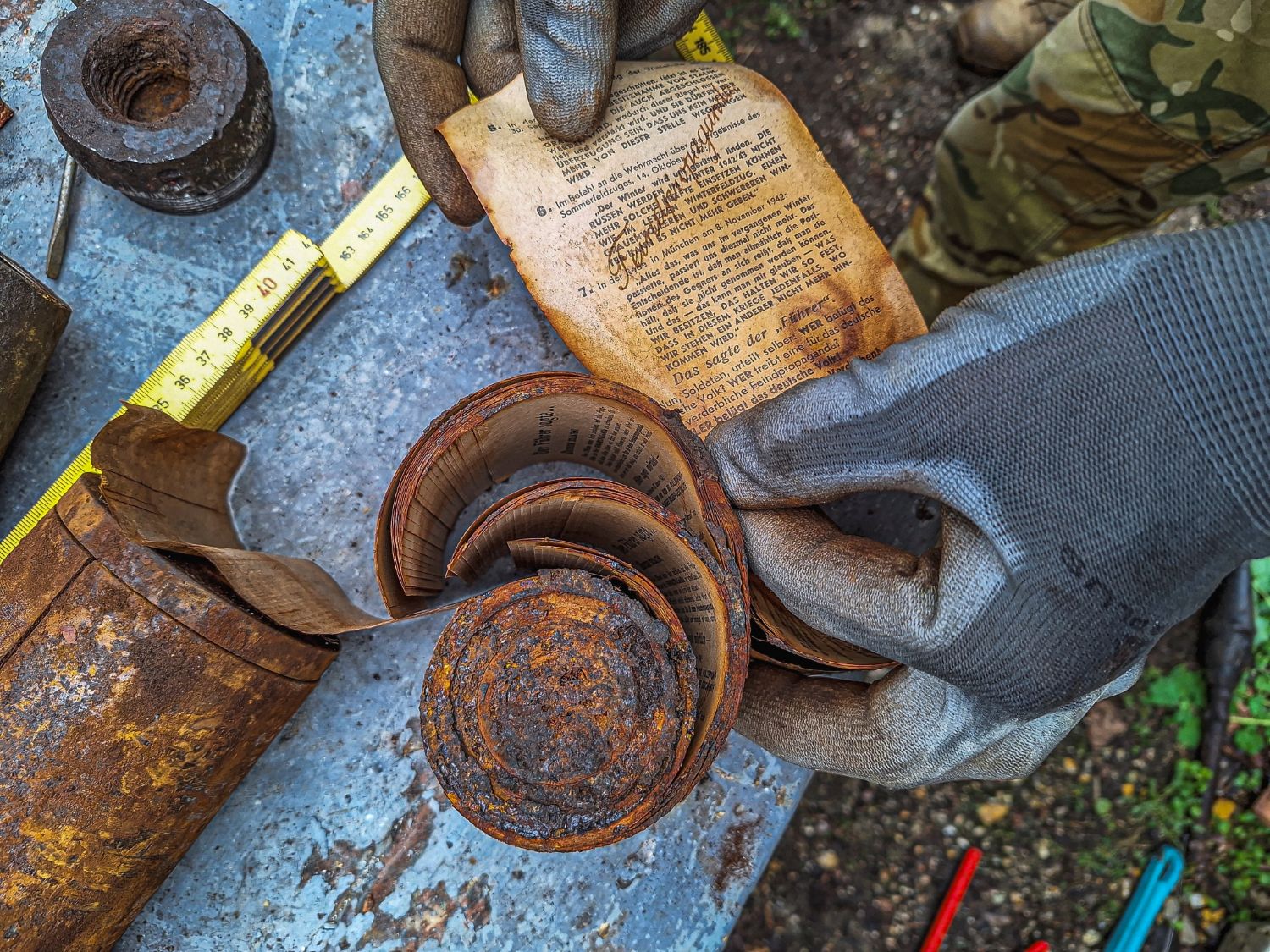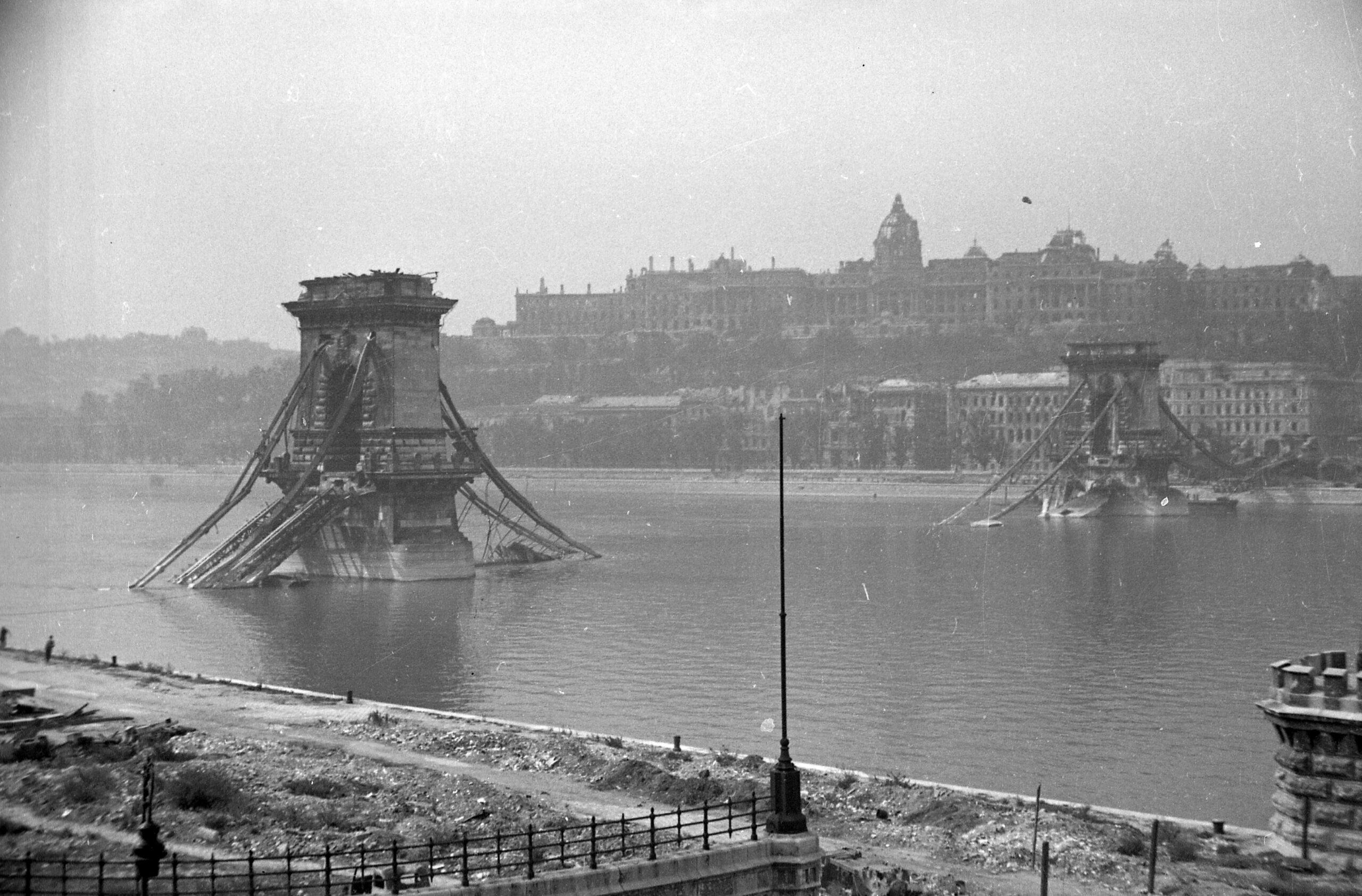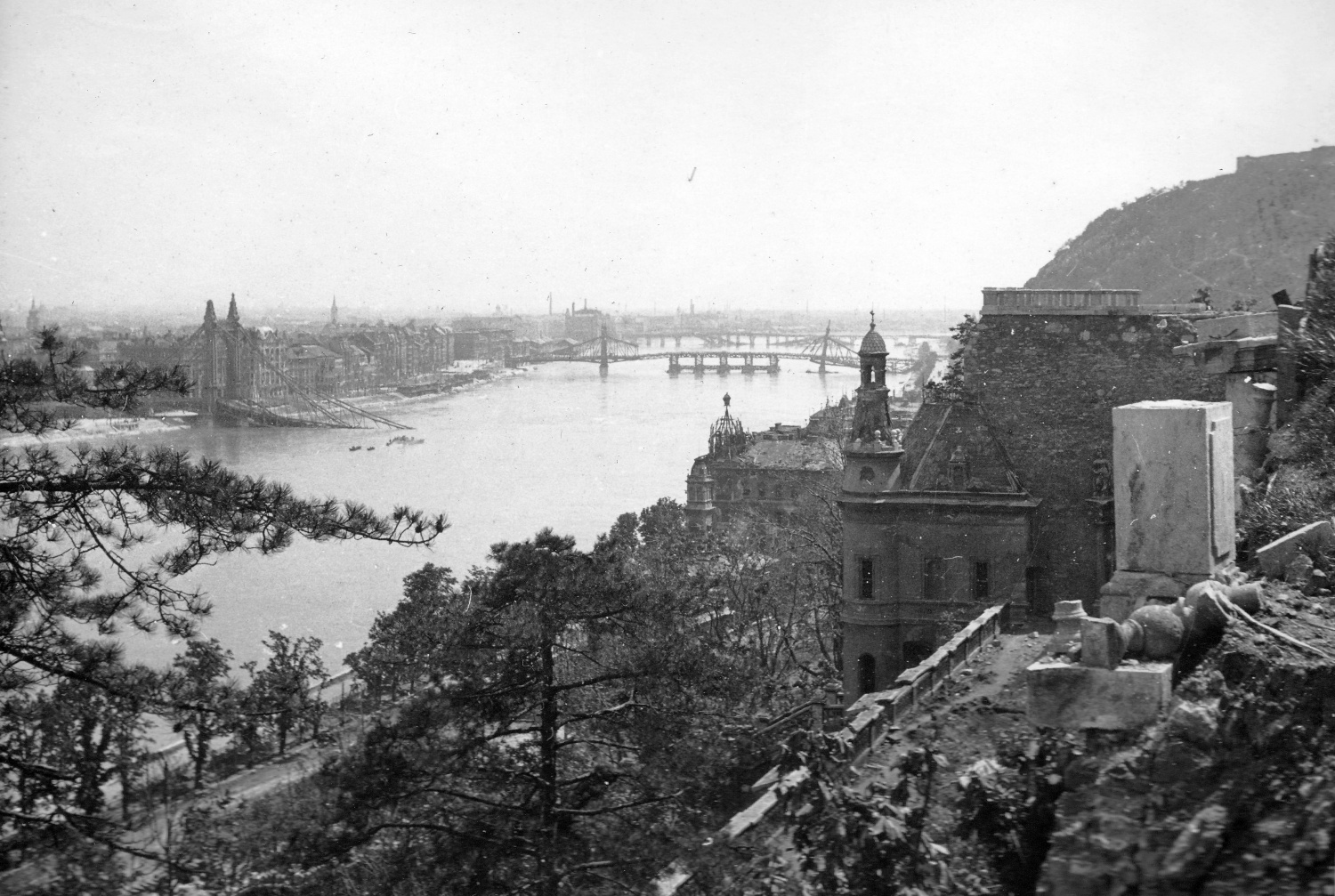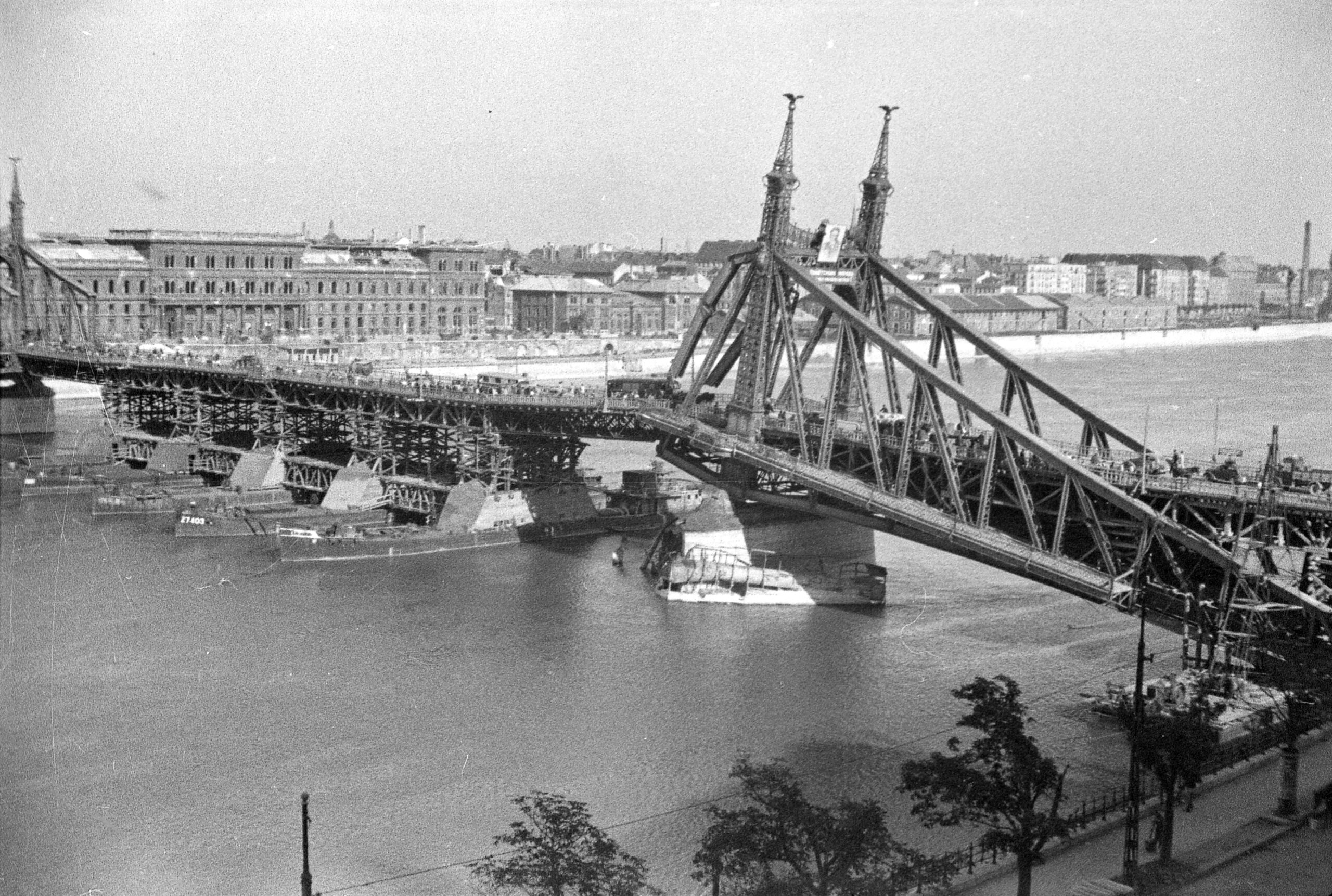
Inside, soldiers found three rolls of yellowed paper containing printed text in German.Continue reading

The Hungarian Museum of Architecture and Monument Protection Documentation Center is commemorating the 80th anniversary of the Siege of Budapest during World War II with a photo exhibition on the damage, kultura.hu reports.
During the siege that lasted from December 25, 1944 to February 13, 1945, Budapest became a theater of war. Not only the soldiers defending the city, but also the population suffered the consequences of the bombardments and the fighting that spread to the streets. The attacks also caused considerable damage to the building stock.

View from the Royal Palace in 1945. Photo: Fortepan / Military Museum of Southern New England
In addition to the uninhabitable houses, the most important public buildings were destroyed, and the Danube bridges were blown up, making it impossible to cross from Pest to Buda.
The exhibition shows the destruction of the built environment through photographs taken immediately after the siege, and gives an insight into the reconstruction that was underway.

Wreck of the Liberty Bridge, supplemented by a pontoon bridge after the bombing. Photo: Fortepan / Kurutz Márton
A social media post by the museum reads that the worst part of the siege took place in the Buda Castle district. Entire streets were rendered uninhabitable and countless buildings were razed to the ground. Many of the badly damaged but still recoverable buildings were demolished during the clearance of rubble or during the new approach to urban planning because of their dangerous condition. However, in addition to the damage, the bombing also uncovered many valuable artifacts, which the exhibition titled “The Siege of Budapest” will reveal to the public, reads the post.
The photographs documenting the damage take stock of the architectural monuments of Pest and Buda, but also present a chronological account of the demolition of the Danube bridges in Budapest.
To make the subject as authentic as possible, the curators have used audiovisual material to present the exhibition, so that visitors can listen to excerpts from siege diaries alongside film newsreels from the period, according to the museum’s website.
The exhibition is on display at Műhelytér of the Hungarian Museum of Architecture and Monument Protection Documentation Center from January 31 to March 30.
Via kultura.hu, memmdk.hu; Featured image: Fortepan / Kurutz Márton